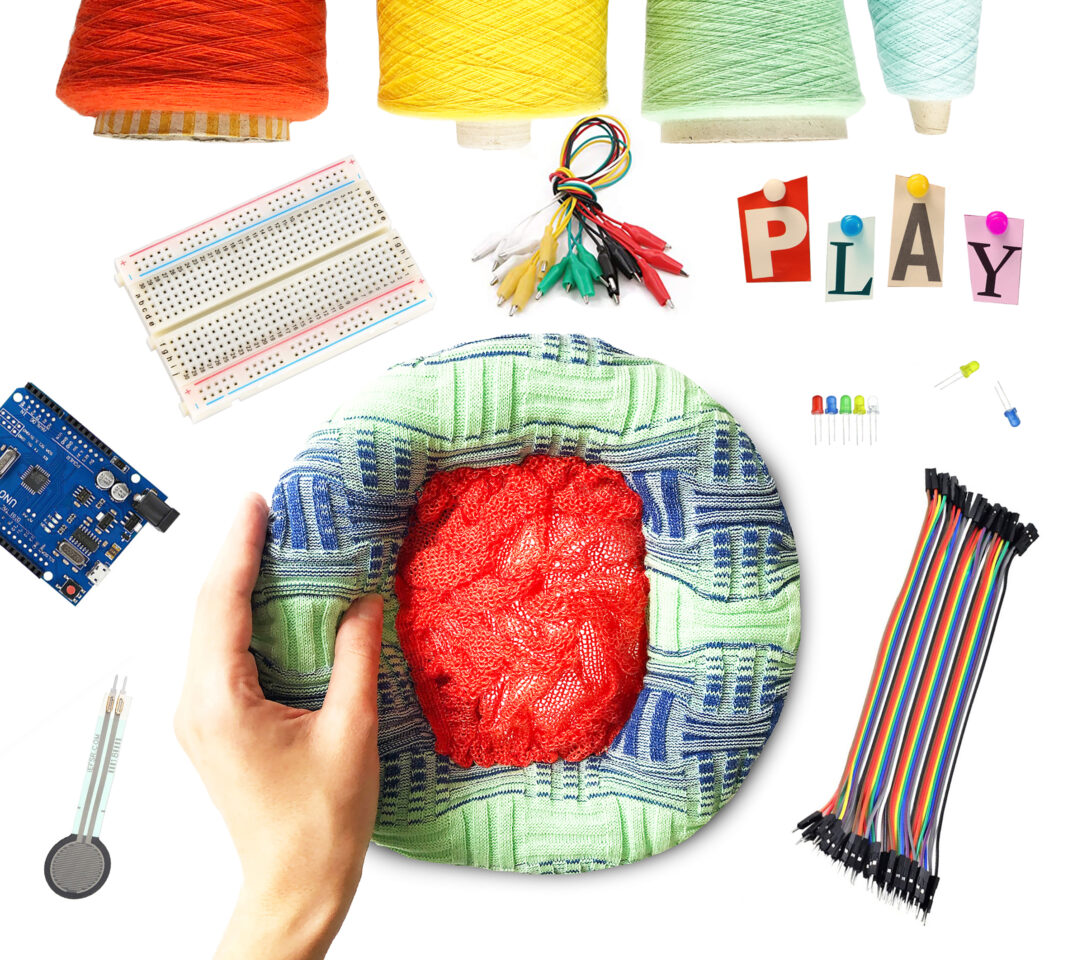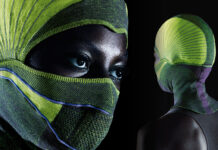Featured earlier this year during her WIP show, London based smart textile designer Michelle Rinow graduated her MA in Knitted Textiles from the Royal College of Art this summer. She shared with KIC how her debut collection ‘Transforming Touch’ has progressed, and explains the complexities of her captivating lighting series.

Studying her BFA in Textiles at the Rhode Island School of Design, Michelle graduated in 2017, then chose to study her MA at the RCA. Gaining experience from working abroad was important to her, and the opportunities for interdisciplinary practice on the RCA MA Textiles course really appealed.
Michelle’s series transforms household lighting into a colourful and tactile play experience. Mundane and commonplace objects are reimagined and traditionally rigid materials are replaced with textiles and lighting technologies, inviting soft fluidity:
“My ‘Transforming Touch Series’ is developed from research on the benefits of sensory play for adults. Many people think play is just for children, but I believe play is necessary through all stages of life and should be accessible to people no matter their physical abilities, age or gender. Gaining inspiration from the tactile objects of childhood, from blocks to bouncy castles and balloons, I investigated different ways of touching and playing with materials as well as what colours and materials inspire people to play.”
Michelle investigated two forms; a wall mounted light and a table light. Reminiscent of children’s play blocks, the aesthetic is cubic with spherical shapes achieving contrast. Bright colour choices marry with the shapes in a purposeful invitation to play.
Michelle’s interest in smart technology integrated with soft textiles drives her investigations into creating fun, responsive and interactive pieces. The ‘Transforming Touch Series’ uses inflatable technology to create movement, and LEDS for illumination. Sensors within knits allow them to respond to users’ touch, and using Arduino software Michelle was able to code how the pieces would behave, “When touched the light turns on and the piece begins to move in unison, both remain on until touched again. Alternatively, the piece could have been coded to flash when touched in one place and inflate when touched in another. I love that technology and coding allows you to design different interactions and responses to vary the user experience.”
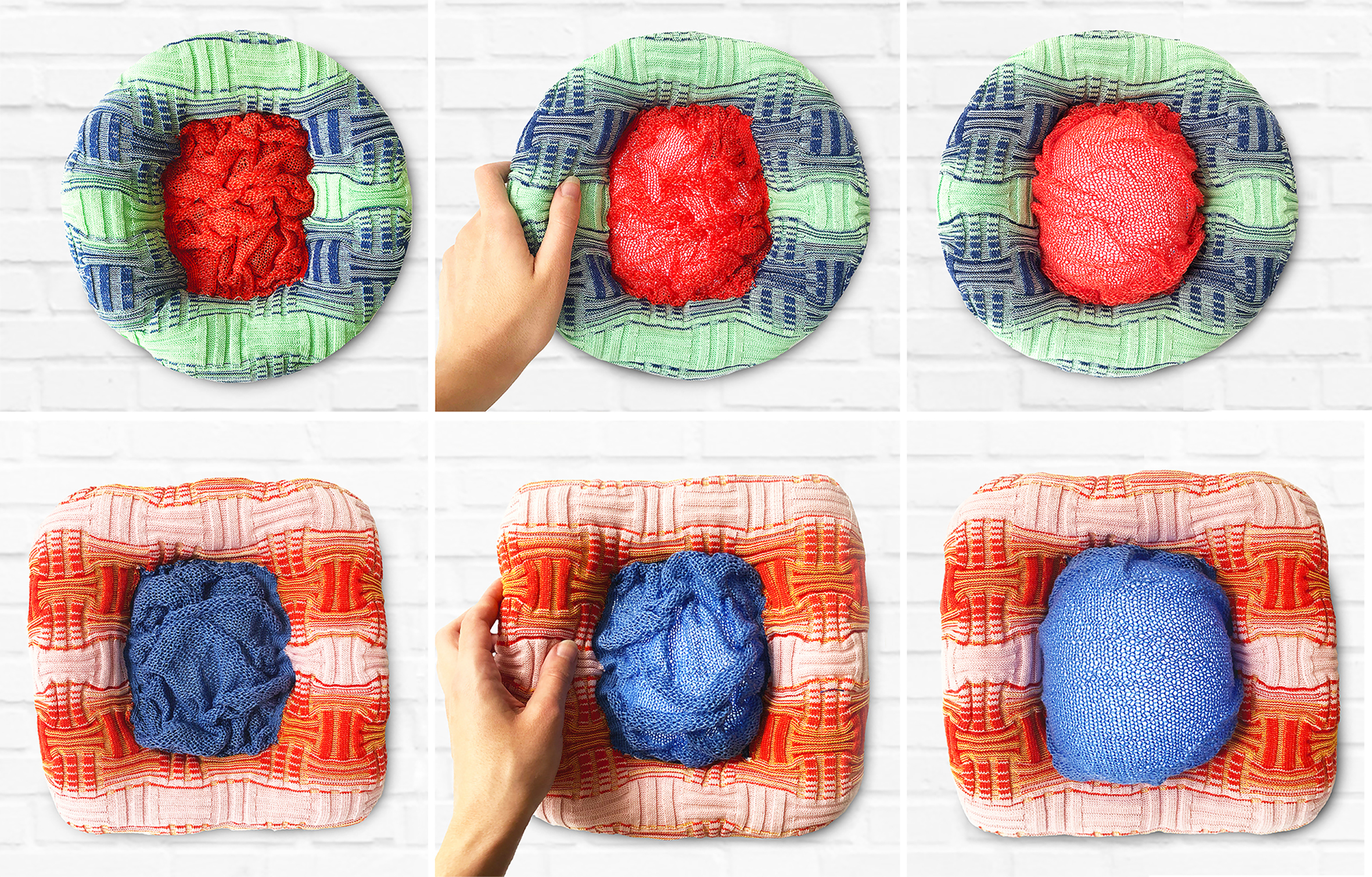
For Michelle, the WIP show in February was a chance to observe visitor interaction with her textiles. She saw people responding playfully to her work; such an energetic response inspired a change in direction for her colour palette. She moved forward with brighter shades and developed garter stitch structures revealing a variety of colours as they stretched – a vibrant multi-colour transformation to emulate the playfulness. The technology in Michelle’s collection also progressed, with the inclusion of lighting alongside the ‘touch and inflate’ performances.

Michelle has considered every single material choice, as the inner portion of the light is made of a rubber inflatable that enables the lighting to change shape too. The plush rim of the lighting acts as a switch, and when “squished, squeezed, poked or stroked” the light activates and moves. Receiving sponsorship from UPW Yarns, Michelle used cotton, silk and nylon blend yarns. Cotton and silk achieved the soft handle, whilst nylon provided stretch and a “techy” aesthetic.
Sampling her fabrics with Shima Seiki and Stoll software facilitated construction of her multi-colour intarsias, allowing her to curate the refined colour placement. The ability of Stoll software to create many iterations of one file relatively quickly appealed to Michelle, as the visual variation in her fabrics when flat vs stretched was quite dramatic. Completing a thorough and varied sampling process to visualise and achieve the perfect colour placements and contrasts for both flat and stretched forms was therefore essential. Experience in programming during her BA meant working on the sampling was familiar, and Michelle is now able to work independently on the programming side of the fabrication process as well as the design; a unique attribute.
Discussing what she enjoys most about the design process, Michelle detailed:
“I love research, and often spend weeks getting lost in articles and then writing reflections on what I’ve read. When researching play, I ended up looking at the subject through a wide range of disciplines, ranging from pop culture and the trend of ‘kidulting’ to the biology and psychology of play in the human race. I then tend to jump right into my other favourite part of the design process, the physical making as a textile designer.”
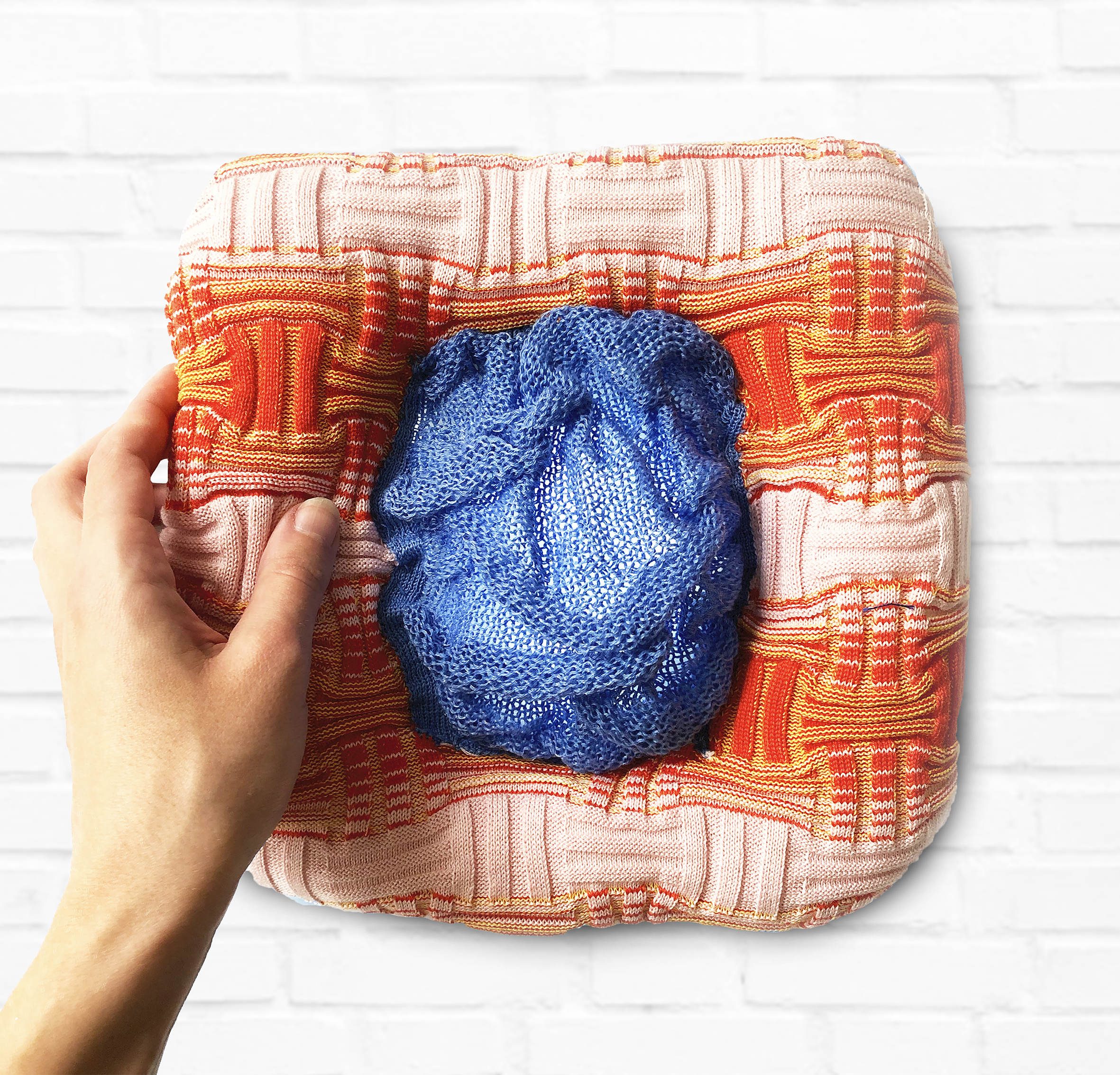
Originally developing her concepts for public spaces around London, social distancing impacted Michelle’s concept so she adapted her attention to home life spaces. Interestingly, the boredom of being stuck at home acted as a catalyst for Michelle’s decision to design lighting by revealing an opportunity to incorporate playful smart textiles within her home surroundings. She had already developed the core fabrics in her collection before lockdown, and luckily although further fabric development was then prevented, she was able to work on the inflatable aspects of her designs and complete the coding from home. Limitations in workspace at home led Michelle to turn her focus on telling her story digitally. She filmed videos of her fabrics in motion, setting up a make shift home photography studio to solve the problem.
Within her practice, joyful and playful approaches are integral. Michelle’s own enjoyment and curiosity is embedded in her work, encouraging curiosity and play from users, “If I am having fun making something, it seems more likely people will enjoy interacting with the finished product as well. Focusing on play is my solution to the many problems and stresses of daily life. Knitting is such a powerful medium for playful interaction because it has a sense of familiarity that makes people want to touch and engage with it.”
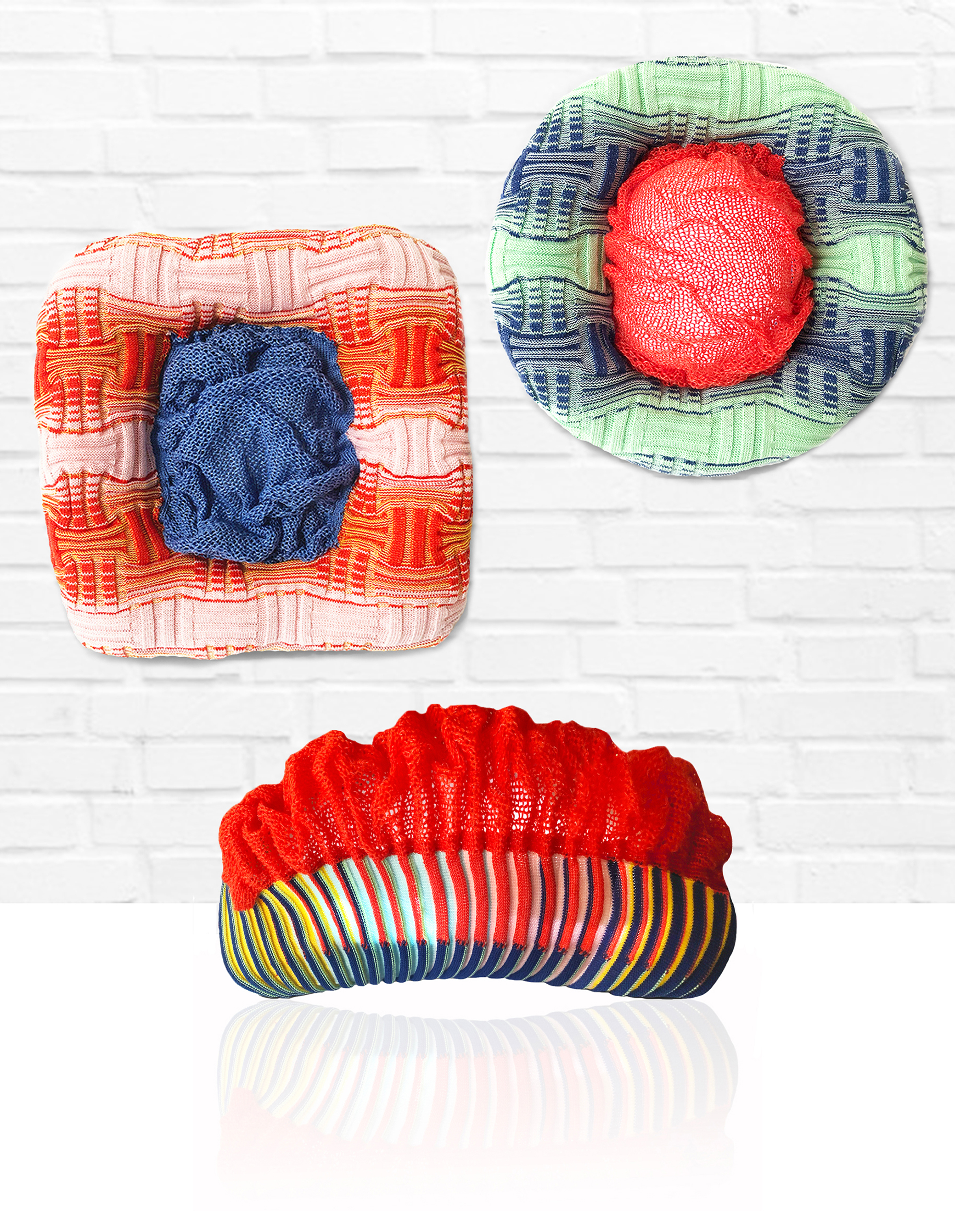
Looking to the future within the design industry, Michelle hopes to continue explorations of smart textiles within the community by incorporating play. Movements such as ‘The Playable City’ are initiatives she would love to get involved with, exploring playful spaces within urban environments.
Michelle’s understanding of knitted textiles combined with smart technology sets her out from the crowd. Her fabrics show sensitivity to the fundamental characteristics of textiles – colour and texture – as well as the functionality of technology in this medium. Combined, these skills make for an exciting creator!
Transforming Touch Series from Michelle Rinow on Vimeo.
Transforming Touch Series from Michelle Rinow on Vimeo.
Visit Michelle’s website.

Subscribe To Our Newsletter
Join our mailing list to receive the latest news and updates from our team.


